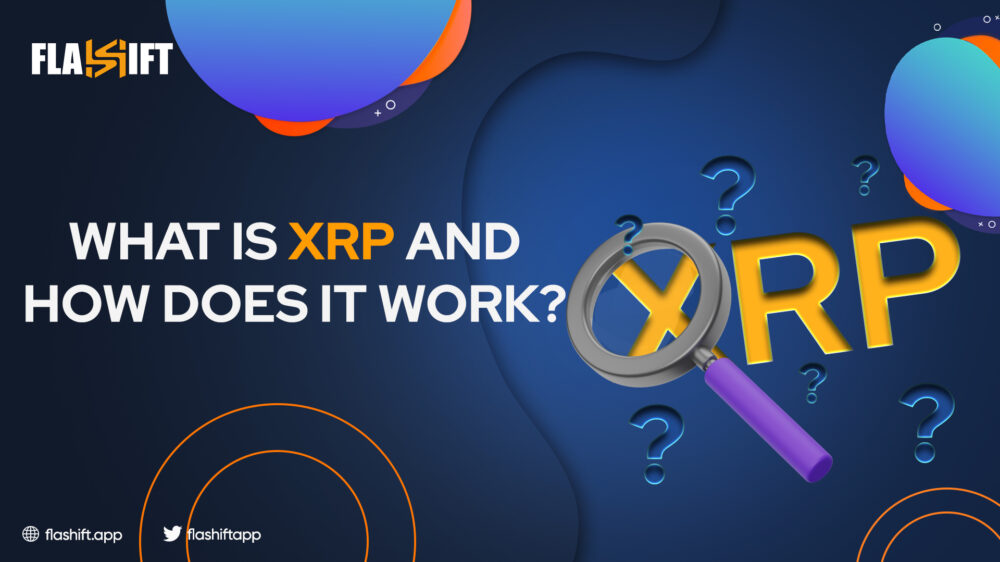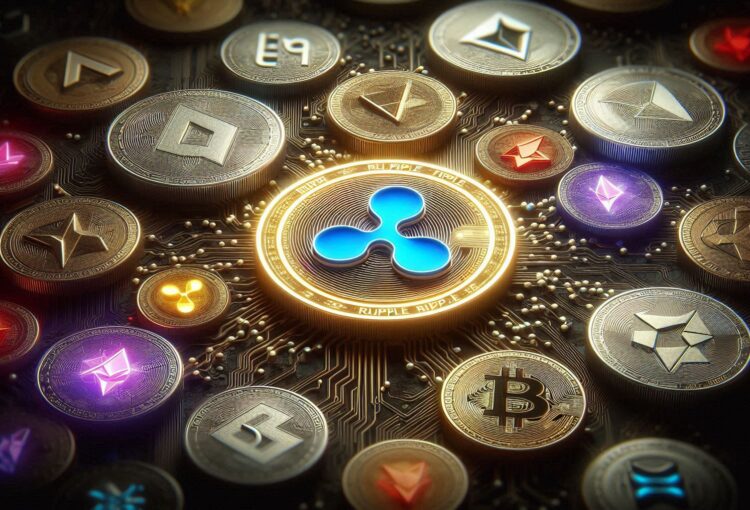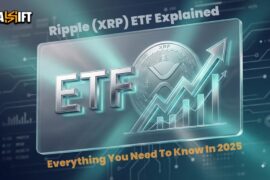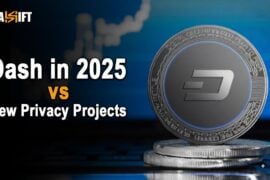What is XRP | Ripple is one of the big boys in the cryptocurrency space, heavily recognized for its contrarian approach to cross-border payments and financial transactions. The project started in 2012 and aimed to disrupt how money moves worldwide. It focuses on instant, cheap international money transfers, positioning it as an attractive option for banks and other financial entities keen on lubricating those wheels.
Ripple’s distinguishing feature is that It is in the process of forging alliances with financial institutions. Until now, it has largely joined alliances with numerous banks and leading payment providers worldwide. This allows them to leverage Ripple’s technology to speed up transactions efficiently. Such collaborations help Ripple earn credibility within the financial space by presenting itself as a worthy alternative to other traditional payment networks.
For exchange cryptocurrency at the best rate, visit Flashift website, create a registration-free transaction and take advantage of a secure and speedy experience.
Ripple In Action
Unlike most other cryptocurrencies, Ripple uses a consensus algorithm. Instead of mining or proof-of-work techniques, It uses its unique consensus protocol, which allows it to process transactions quickly. This speed makes it very versatile for financial institutions that need speed in settlement times. Therefore, confirmation of Ripple transactions can be given within seconds, while traditional banking would take an extended period to complete the processes.
Another critical aspect of Ripple is the performance of the market. The price of XRP has gone through many fluctuations, depending on the sentiments in the market, news about regulations, and other news related to the Ripple network. Investors have closely monitored all these different factors as they affect the valuation of XRP. Ripple’s position, partnerships, and challenges make it a fascinating subject for investors and industry experts to analyze and discuss.
For exchange Bitcoin (BIT) to XRP in one second, Flashift is the easiest way.
XRP Regulation Problem
Despite all the benefits, Ripple has undergone many tests related to regulatory scrutiny. In late 2020, the United States Securities and Exchange Commission sued Ripple Labs for selling XRP as a security. If anything, this case only threw a wrench into certainty surrounding XRP’s status and future in the market. The case may make significant jurisprudence with an implied impact on Ripple’s operations and across the broader cryptocurrency ecosystem.
What Exactly Is XRP?
Ripple Labs is a company that uses XRP as a cryptocurrency and token to conduct payments on its network. Ripple mainly improves worldwide money transfers and currency exchange.1 Traders also use XRP to hold wealth and profit from price volatility.
Although XRP is commonly referred to as Ripple, it is vital to note that XRP is a freely available digital currency unrelated to Ripple, a technological business. Ripple is a technology that Ripple utilizes in its products and services to assist consumers stay consistent since it is quick, effective, dependable, carbon-free, and delivers rapidly.
The whole quantity of the token was/are allocated in the following manners:
- Initially, Ripple, the parent firm, received 80 billion XRP coins. To assure a steady supply of XRP, the business placed 55 billion in an account for escrow.
- The balance of 20 billion XRP was then distributed to Ripple co-founders and its key staff.
The rest of the Ripple is being distributed at an average of less than one billion monthly, even though the initial release timeline was 55 months.
Read More: The most popular GameFi games
Pros of using XRP
- Quick resolution. Payment verification is relatively quick. They typically take between four and five seconds, as opposed to the weeks it can take institutions to finish the transfer of funds or the hours or minutes it may take for transactions made with Bitcoin to be validated.
- The fees are modest. A single transaction on the Ripple network costs just 0.00001 Ripple, or one-tenth of a cent at current pricing.
- Flexible interchange network. The Ripple network does more than execute payments in Ripple. It may, however, be used in other currencies, such as dollars and digital currencies.
- Large businesses in finance use it. Large corporations may potentially use Ripple as a payment platform. Santander and Bank of America already use this network, which is proving its widespread adoption in the corporate market.
Cons of using XRP
- A small-centered system. A few of the reasons bitcoins became famous was because they were distributed, removing influence from enormous financial institutions and authorities. Due to its default collection of validation methods, the Ripple network might be relatively centrally controlled, which contradicts this idea.
- A large amount of Ripple has already been produced. Although the majority of the Ripple quantity not in use remains in an escrow account, massive amounts may be reintroduced at inconvenient periods, affecting the price of Ripple.
- The SEC has taken action against XRP. The SEC filed a lawsuit over Ripple in December 2020, claiming that because it can select when to issue Ripple, the business should have declared it as a commodity. The corporation has refuted the charge.
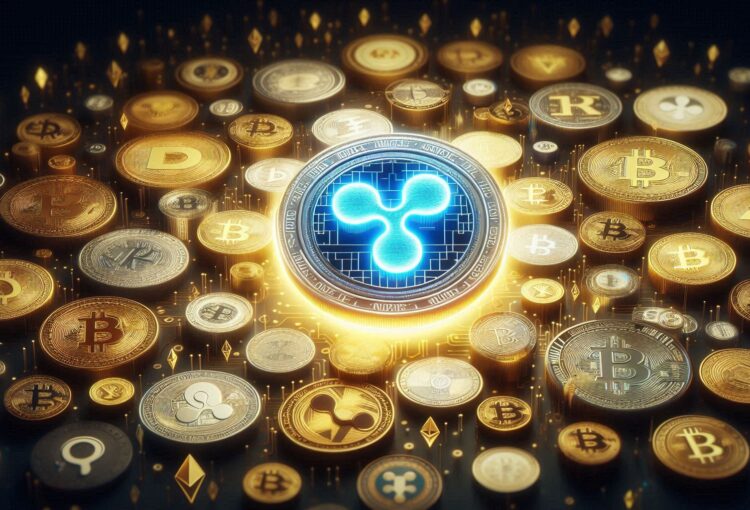
Ripple and XRP Applications
You could use Ripple in the same way you would any other digital currency for purchases or possible investments. You might also use the Ripple network to conduct different operations, such as currency exchange.
For instance, if you are interested in exchanging US dollars for pounds, you may first exchange them for XRP via the Ripple network before you use them to buy pounds, rather than doing it straight via a bank or money exchanging agency. This might be quicker and less costly than paying the exorbitant fees that banks and money transfer companies may demand.
How Safe Is XRP?
The Ripple network of XRP employs a consensus system to validate operations. Inspectors update the ledgers every three to five seconds as fresh transactions arrive to confirm that they reflect the other records. Consequently, the entire system is safer and more effective than other cryptocurrencies regarding transaction validation.
Conclusion
Despite its numerous problems, XRP maintains one of the most valuable currencies in terms of market capitalization. It may be used for commerce or as a hedge identical to any other type of digital money. If you choose to make investments, be assured you don’t invest beyond what you can lose.
FAQ
- What is XRP and how does it work?
XRP is a digital currency developed by Ripple Labs to facilitate fast, low-cost cross-border transactions. It operates on the XRP Ledger, which uses a consensus protocol instead of traditional mining to validate transactions.
- How is XRP different from Bitcoin?
Unlike Bitcoin, which relies on proof-of-work mining, XRP transactions are validated through a consensus protocol, making them much faster (3-5 seconds) and more energy-efficient. Additionally, XRP is designed primarily for financial institutions, while Bitcoin is meant to be a decentralized store of value.
- Can XRP be mined?
No, XRP cannot be mined. All 100 billion XRP tokens were pre-mined at launch, with a portion distributed to developers, investors, and financial institutions.
- What is On-Demand Liquidity (ODL) and how does XRP play a role?
On-Demand Liquidity (ODL) is a Ripple solution that uses XRP to provide instant liquidity for cross-border transactions, eliminating the need for pre-funded accounts in multiple currencies.
- Is XRP a good investment?
XRP’s investment potential depends on various factors, including regulatory developments, adoption by financial institutions, and overall market trends. As with any cryptocurrency, investing in XRP carries risks, and it’s important to conduct thorough research.
- What are the main advantages of using XRP?
XRP offers several benefits, including fast transactions (settling in seconds), low fees, scalability (handling up to 1,500 transactions per second), and energy efficiency compared to proof-of-work cryptocurrencies.


